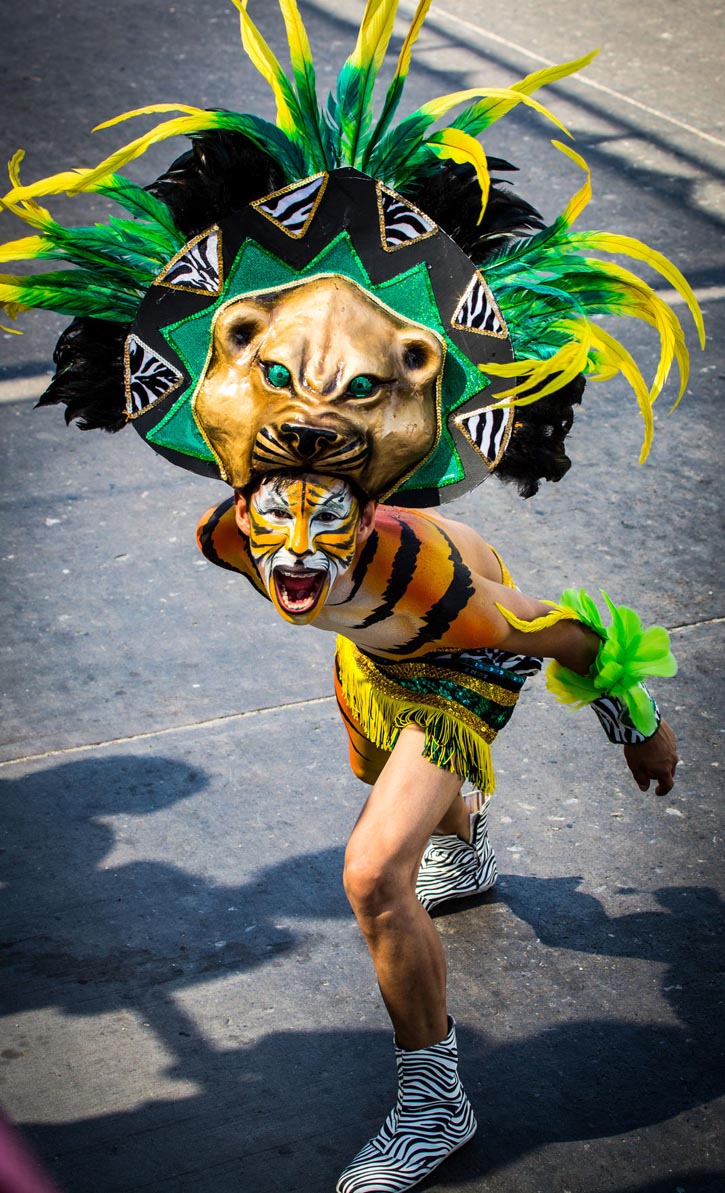Colombia’s fourth largest city (pop. 1.6 million) is known for its busy port and for the bacchanalian Carnaval de Barranquilla, designated a World Masterpiece of the Oral and Intangible Heritage of Humanity by UNESCO. This, the most famous celebration in Colombia, is a time of music, dancing in the streets, and revelry. It lasts only about four days, but the city starts readying for it days (if not weeks) in advance.
Saturday is the main event. That’s the day of the Batalla de las Flores (Battle of the Flowers) parade.During the rest of the year there’s not a whole lot to lure the visitor to Barranquilla. It is not a colonial city, but vestiges of its early 20th century importance can be seen in its El Prado district.For most Colombians, Barranquilla is synonymous with carnaval, and they boast that the Carnaval de Barranquilla is the world’s biggest after Rio, although folks from New Orleans may balk at this claim. In Colombia, this is really the only place where the bacchanal is celebrated, although some Caribbean cities and even Bogotá make an effort.

Performers in elaborate costume sing, dance, and stroll their way down the streets of Barranquilla during the Batalla de Flores parade. Photo © Gary Tognoni/123rf.
During the four days prior to Ash Wednesday, in late February or early March, the Carnaval de Barranquilla is full of Costeño pageantry: costumes, music, dance, parades, and whiskey.
Officially, Carnaval gets going on Saturday, but on the Friday night before, La Guacherna is held. One event of the night is the Desfile Gay, which is when outrageously costumed men dressed in drag parade down a street to the hoots and hollers of thousands of bystanders.
Saturday is the main event. That’s the day of the Batalla de las Flores (Battle of the Flowers) parade. It’s when floats carrying beauty queens and dancers and thousands in comparsas (groups) in elaborate costumes make their way down the Calle 40 under the sizzling Barranquilla sun. This event dates back to 1903, when the celebration was begun as a celebration of the end of the Guerra de Mil Días (Thousand Days’ War). Participation in the parades is serious business here, involving planning, practice, money, and, sometimes, connections. However, there is one comparsa during the Batalla de las Flores in which just about anyone can participate, and it’s one of the most popular. That’s the comparsa of “Disfrazate como Quieras”—go however you like. Anybody in a costume, from the silly to the sexy, can join.
On Sunday, during the Gran Parada de Tradición y Folclor, groups of dancers perform on the Calle 40 to the typical, hypnotic music of carnaval—a mix of African, indigenous, and European sounds. On Monday there is another parade, the Gran Parade de Comparsas, and, starting in the late afternoon, a massive concert attracting more than 30 musical groups. These compete for the award of Congo del Oro. On Tuesday, after four days of music and dancing, things wind down with the parade Joselito Se Va con las Cenizas. This is when Joselito, a fictitious Barranquillero, dies after four days of rumba, and his body is carried through the streets as bystanders weep. On Wednesday, Barranquilleros call in sick.
You can watch all the action of the parades from the palcos (bleachers) that line Calle 40. Keep in mind that the parades take place in the middle of the day, meaning lots of sun and heat. Tickets for the palcos can be ordered online at Tu Boleta.
With regard to carnaval, it’s said that “quien lo vive, es quien lo goza” (“whoever experiences it is who enjoys it”). But to do that, it’s crucial to get those hotel and flight reservations early.
Excerpted from the First Edition of Moon Colombia.